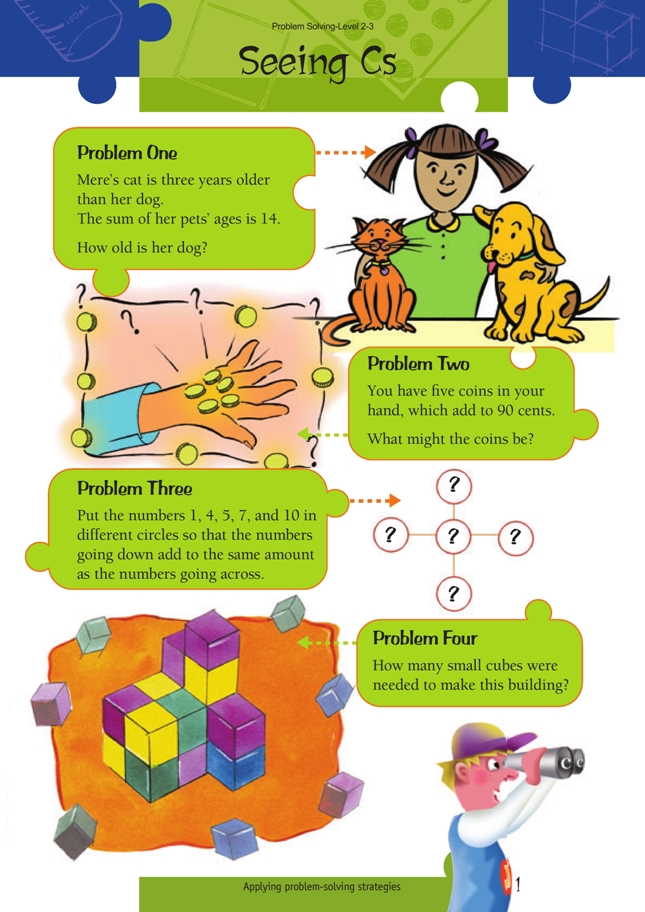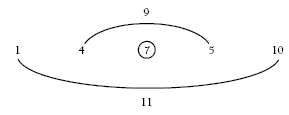These are a level 2 number problems from the Figure It Out series.
A PDF of the student activity is included.
Click on the image to enlarge it. Click again to close. Download PDF (247 KB)
solve problems using addition facts
Problem One
Students are likely to solve the problem by trial and improvement. For example, they might try the numbers seven and four for the ages of the cat and the dog respectively. Realising that the sum of these numbers is 11, they will then make adjustments upwards until they find the correct answer. If necessary, suggest to students that they try fractions.
Check the students’ ability to handle the processes of the problem by varying the conditions, for example:
“Mere’s cat is twice the age of her dog. The sum of their ages is 21. How old are the animals?”
Problem Two
Allow students to come up with as many solutions as they can. Most of them will approach the problem randomly, finding possible answers by experimentation. Make sure toy money is available for them to use.
When collating the students’ solutions, you could organise the answers in a table to avoid duplication. This will also help find all the possible combinations:
Experiment with the problem by changing the conditions. For instance, if students find this example too difficult, give them an easier example:
“I have five coins that add to 50 cents. What might they be?”
Problem Three
Some students may find that making cards with the numbers 1, 4, 5, 7, and 10 and moving them around is a useful strategy. Another strategy is to systematically eliminate one number to see if the remaining numbers can be paired. For example, if 7 is used as the middle number, students will see that a solution is not possible because the remaining numbers cannot be organised in pairs with the same total:
Set other problems of this type by changing the numbers involved, for example:
“What if the numbers were 2, 3, 6, 7, and 11?”
Problem Four
Students may experience difficulty visualising blocks that cannot be seen in the picture. Provide multilink cubes or similar building apparatus for these students. Encourage them to visualise how the building could be broken up into blocks to make counting easier, for example:
The problem can be extended by asking students to draw their own cube buildings and to give these drawings to a classmate to build.
Answers to Problems
1. Mere’s dog is 51/2 years old.
Mere’s cat is 81/2 years old.
2. Some possible answers are:
50c, 20c, 10c, 5c, 5c
50c, 10c, 10c, 10c, 10c
20c, 20c, 20c, 20c, 10c
3.
4. 17 cubes




